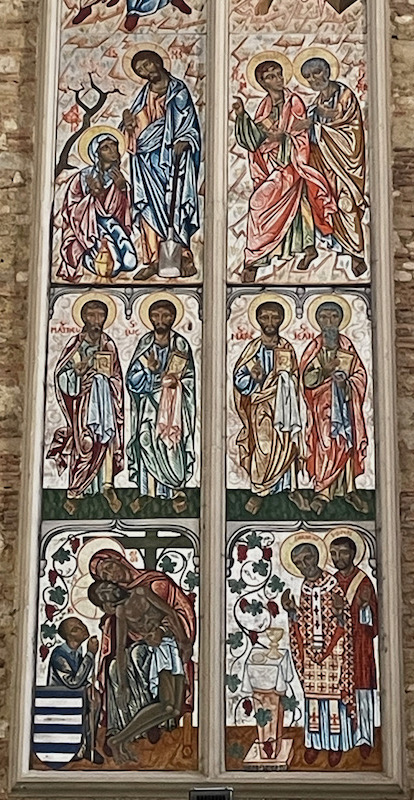Our Blog - Éauze, France
Another very old town, Éauze is the ancient Elusa, dating back to the Iron Age. Sitting 3 km north of the current city, an oppidum was already occupied from the 3rd century BC. The Romans arrived in the 1st century BC and, although they resisted initially, they were defeated in 56 BC. A new settlement was built 1 km east of the current town. In the 4th century, Éauze became one of the first bishoprics and a monastery was created around 980.
Henry III of Navarre (not yet Henry IV of France), having returned to the Navarre territory after his four years of captivity, was ambushed here in 1576, narrowly escaping death. It seems he didn't hold a grudge against the town, because he stayed in Éauze in June 1579 with his first wife, Marguerite de Valois (nicknamed Queen Margot).
The town is also known as the "capital of Armagnac" and is located in the most prestigious appellation controlled areas of Bas-Armagnac. Armagnac is a kind of brandy produced in this area and is said to be the oldest brandy and liquor recorded to still be produced.
A former fabric store, this magnificent urban residence has been converted into a tourist office. The typical 15th century façade is decorated with half-timbering in cob and brick on a wooden frame. The upper floors reveal the cross-shaped reliefs of Saint Andrew and the brick joists.

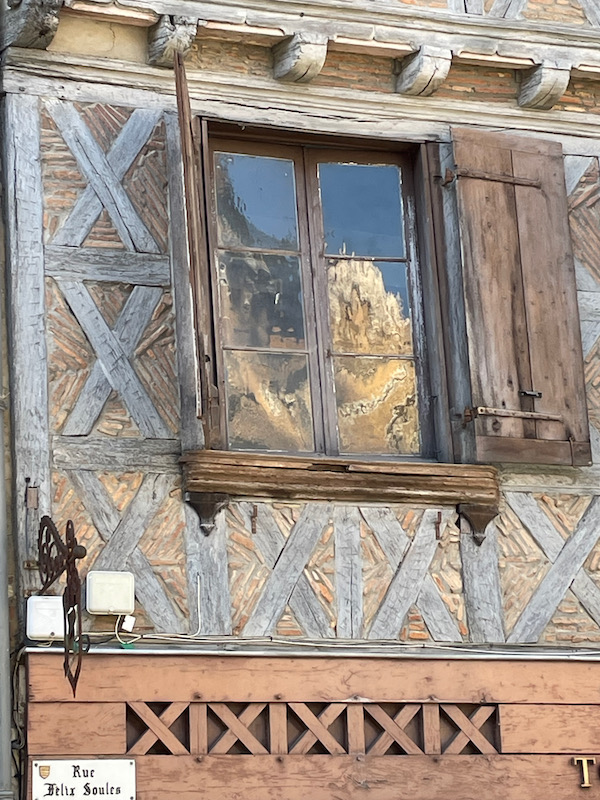
I mentioned earlier that Henry III and his wife stayed here in 1579 ... this is the house that they stayed in, named La Maison Jeanne d'Albret (the house of Jeanne d'Albret). Located on the main square, the house belonged to his mothers in the 16th century, who would make trips between Nérac and Pau, and Éauze was an important stopover on this journey.
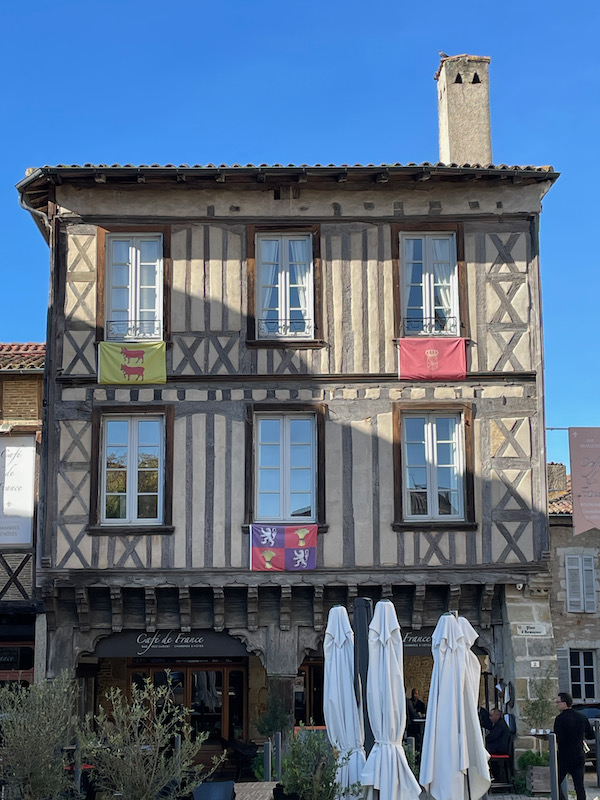
Another house from the same time period as the house of Jeanne d’Albret, the Maison des Consuls is decorated with neat windows and highlighted by flared corbel sills. On the 1st level in masonry, the floors are corbelled and the facade has rich decoration.
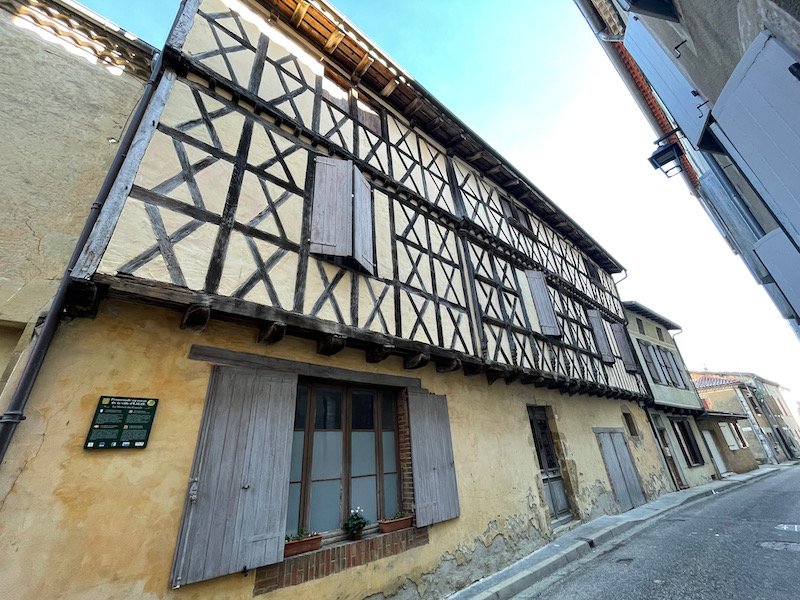

The medieval town of Éauze rose up around the Saint Luperc cathedral and, like many other medieval towns, had fortification walls built around it for protection. There was a moat around the walls and 4 entrances flanked with towers. They were dismantled under Richelieu in 1625 and a "ring road" follows the path of the old moat. Here you can see the remains of an entry gate and a tiny piece of wall.

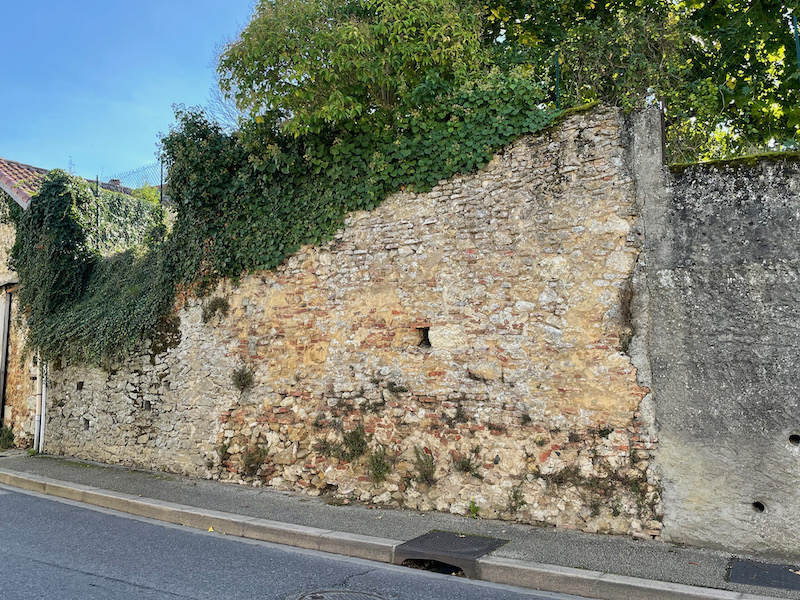
Henry III of Navarre was crossing his Armagnac lands when he learned that a rebellion was being planned at Éauze. Henry and his companions rushed towards the conspirators, who retreated and his armies soon arrived and the rebellion was quashed. There is a bas-relief on the side of a building that shows Henry III on a white horse and various scenes from the rebellion.
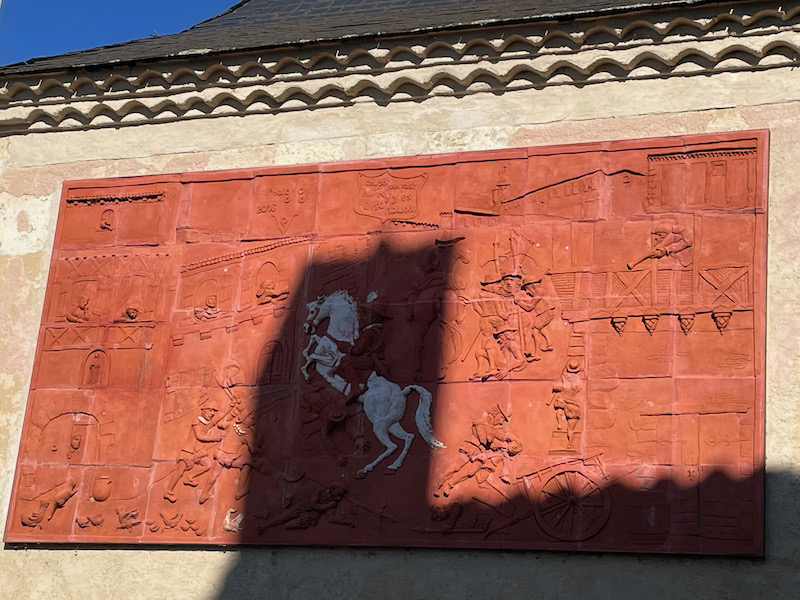
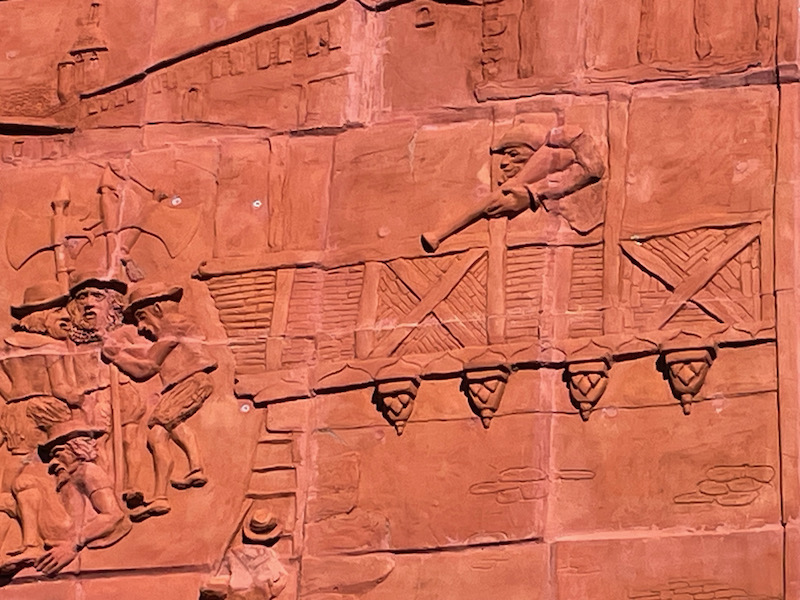
The Cathedral of St Luperc is right on the main square and was started around 1463 by the head of the monastery nearby. It is a typical southern Gothic building. With a Languedoc plan with a single nave with seven bays bordered by low chapels, it ends with a choir with a canted apse, of the same height and width. The main entrance is on the side, facing the main square of town. The ceiling of the porch has ribbed Gothic vaults with colored coats of arms. It was destroyed durin gthe Wars of Religion in the 17th century and rebuilt.

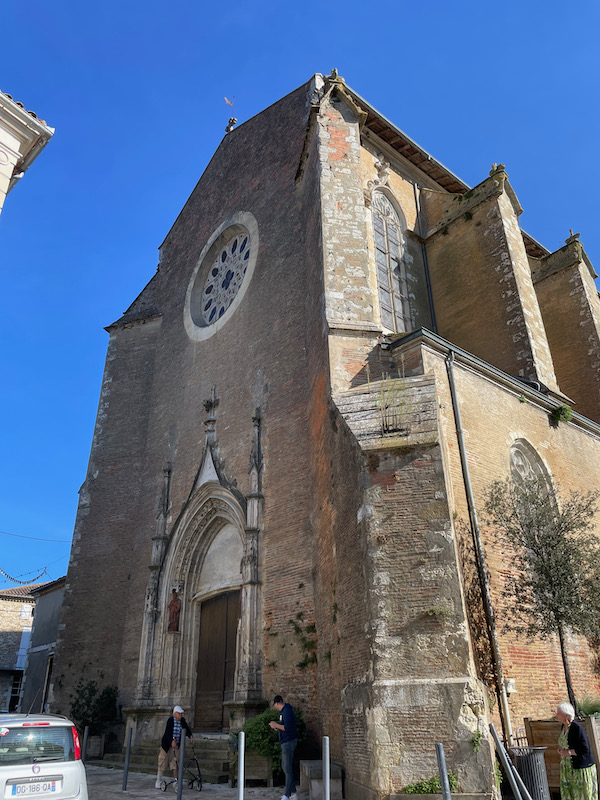

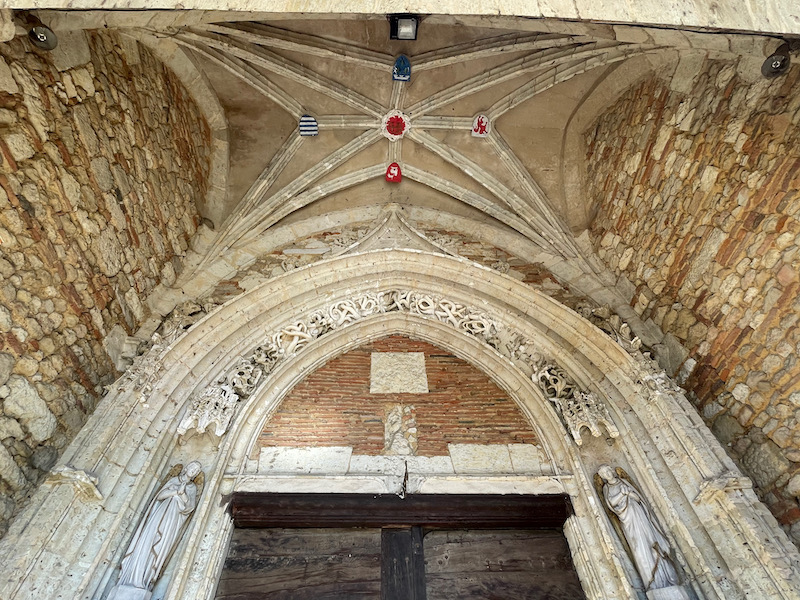
Here you can see the long, narrow, and very tall nave, with ribbed vaults and side chapels. Then an example of one of the side chapels ... each has an altar and altarpiece above, vaulted ceilings, and stained-glass windows. The inside had a major restoration campaign between 1860 and 1878 including the stained-glass windows. In 1972, the interior plaster was removed to reveal the stone and bricks underneath.

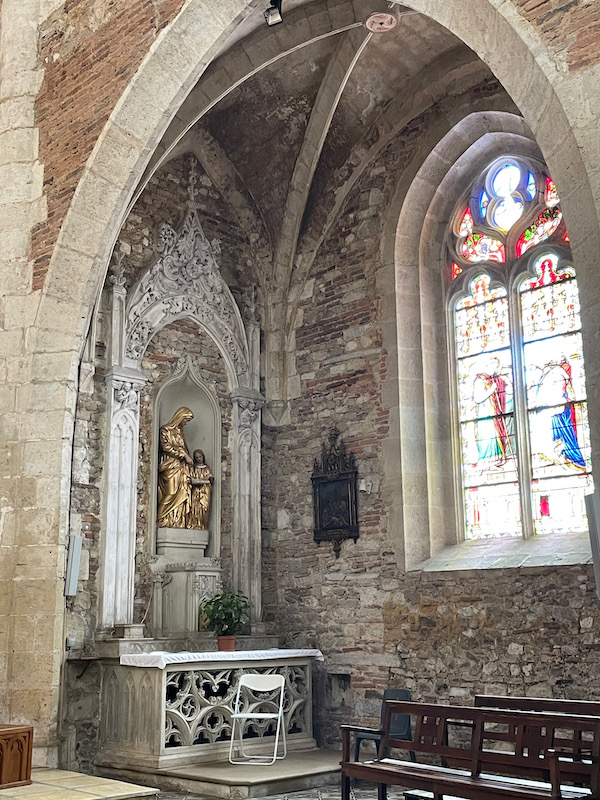
Chapel of Saint Agnes with stained-glass windows representing Saint Michael the archangel with the dragon of the Apocalypse (on the left) and then Saint Raphaël and Saint Gabriel (on the right).

Not easy to see, but in the first interior picture, you can see the apse at the very end, with stained-glass windows on the right-and-left and painted "windows" in the middle. The painted vignettes depict scenes from the life of Jesus Christ. The stained-glass windows on either side depict prophets, apostles, and saints.
